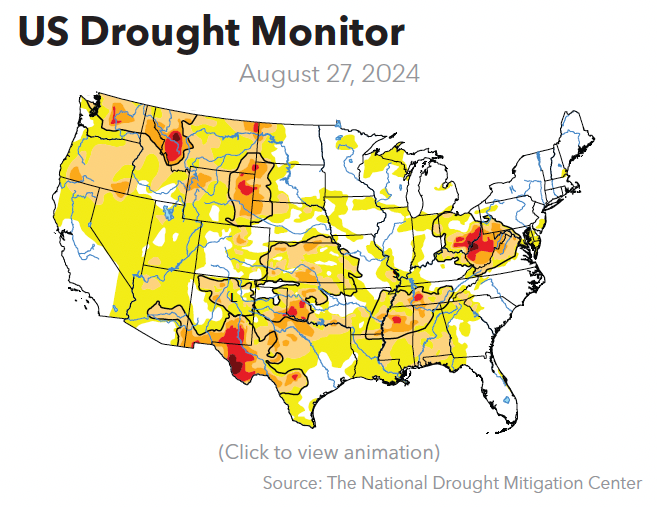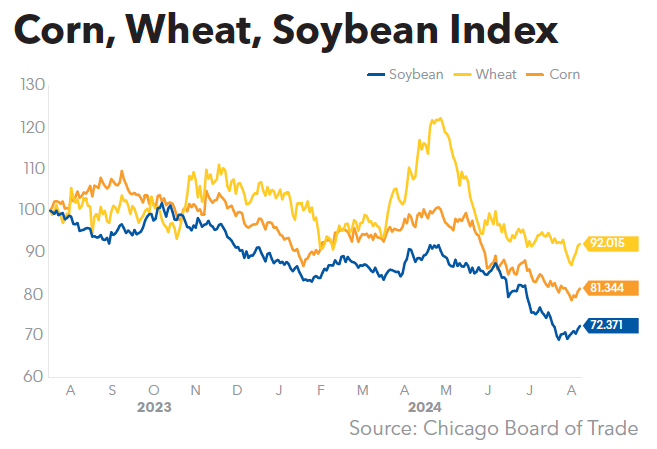US Gulf:
Falling water levels on the Lower Mississippi River
forced stronger towing restrictions on travel above New Orleans. Vessels
traveling northbound saw loading drafts reduced by 10-15%, up from 5% at last
report, while tow lengths were cut by 5-10 barges, depending on vessel
horsepower. Delivery times were stretched by an estimated 24-72 hours as a
result, sources said.
Bayou
Sorrel Lock guidewall work, slated to
run through Oct. 30, restricted travel between 7 a.m. and 4 p.m., pushing
delays to as high as 31 hours during the week, Corps data indicated, up from 22
hours at last report. Dredging reported last week in the New Orleans Harbor was
scheduled to wrap up on Aug. 26.
Repairs at Brazos Lock are anticipated to continue
into October, limiting weekday travel from 7 a.m. to 7 p.m. Waits were reported
up to seven hours during the week, falling from 25 hours at last check.
Harvey
Lock was completely shut on Aug. 19-27 due to reverse head conditions, sources
said. Lock operators passed a handful of vessels on Aug. 27, though no lockages
were observed on Aug. 28-29.
Port Allen Lock delays were quoted up to seven hours
during the week, while sources noted intermittent 3-11 hour delays at
Industrial Lock. Most Algiers Lock wait times fell in the 16-25 hour range, and
tows transiting Leland Bowman Lock waited up to five hours to pass.
Mississippi River:
Towing
restrictions intensified during the week due to reduced water levels on the
lower river, sources noted.
Tows traveling
upriver saw loading drafts reduced by 10-15%, intensifying from 5% at last
report. Southbound loading drafts were cut by 15-20% on travel between Cairo,
Ill., and Rosedale, Miss., up from 5-10% last week, while southbound drafts
were slashed by 10-15% from Rosedale to New Orleans.
Additionally,
barge counts were rolled back by 5-10 units, sources said, depending on vessel
horsepower. The restrictions were likely to delay travel times by an estimated
24-72 hours, sources said.
The river gauge
at Vicksburg, Miss., posted at 9.7 feet and falling on Aug. 29, was forecast to
sink to a low-stage 4.3 feet by Sept. 12. The St. Louis gauge was noted at 2.9
feet and holding on Aug. 29, while the Memphis gauge was projected to move
below the (-)5-foot low stage on Aug. 30.
Navigation closures for dike work were
reported at Mile 759 in the southbound direction between 7 a.m. and 7 p.m.
daily. The project is scheduled through Sept. 18, with no impacts to upriver
travel expected.
A pipeline removal effort at Mile 158 is
scheduled to continue through Sept. 24. No shutdowns were anticipated, though
channel restrictions could limit travel while work is underway. Planned
revetment projects at Miles 775 and 908 will block southbound travel during
daylight hours on Sept. 1-5. Intermittent
4-11 hour delays were noted at Lock 24 during the week.
Many NOLA-loaded
barges headed to upper-river ports are scheduled to begin final releases in
October, sources said. Tows destined for ports between Dubuque, Iowa, and St.
Paul, Minn., will release from NOLA during the first week of October, while
tows traveling between St. Louis and Clinton, Iowa., will depart as late as the
third week of October. Upper-river locks will close between December and March
2025 for the winter navigation season.
Illinois River:
Loading drafts on the Illinois River continued at a
maximum 9.5 feet for Miles 1-231 and nine feet above Mile 231.
Lockport Lock will close for vertical lift gate
installation from Jan. 14 to March 11, 2025, according to Corps posting,
blocking travel to and from the Chicago area. Peoria Lock wait times were
reported up to five hours during the week.
Ohio
River:
Low water levels
on the lower Ohio River held draft limits to a maximum 10-10.5 feet, depending
on location and direction of travel, sources said. Tow lengths topped out at 15
barges.
Normal travel
through the Markland Lock primary chamber is scheduled to resume on Aug. 30,
temporarily ending a period of daily 19-hour shutdowns, though the closures are
scheduled to return between Sept. 8 and Oct. 6. Waits were posted up to 14
hours during the week.
The main chamber at Hannibal Lock is closed through
Nov. 8 for miter gate repairs, triggering delays up to eight hours, down from
23 hours at last report.
Downriver travel is unavailable through McAlpine Lock from 7 a.m. to 7 p.m.
through Nov. 30, with delays posted up to 12 hours.
Belleville
Lock will undergo 30-day main and auxiliary chamber shutdowns before the end of
the year, sources said.
Wait times were noted up to seven hours at John T. Myers Lock. On the Tennessee River, Kentucky Lock delays were quoted up to 13 hours, and tows waited up to 27 hours to pass Wilson Lock. Construction at the Monongahela River’s Lock 3 ended on Aug. 28, sources said.
Arkansas
River:
Van Buren Bridge
repairs that began on Aug. 22 are underway through Sept. 8. Crews will attempt
to pass waiting vessels following the ninth day of work, sources said, though
shuttle barges will be able to pass whenever the channel is free of equipment.
Webbers Falls Lock closed on Aug. 26 for miter gate
inspections. The project is scheduled to continue through Sept. 8.

